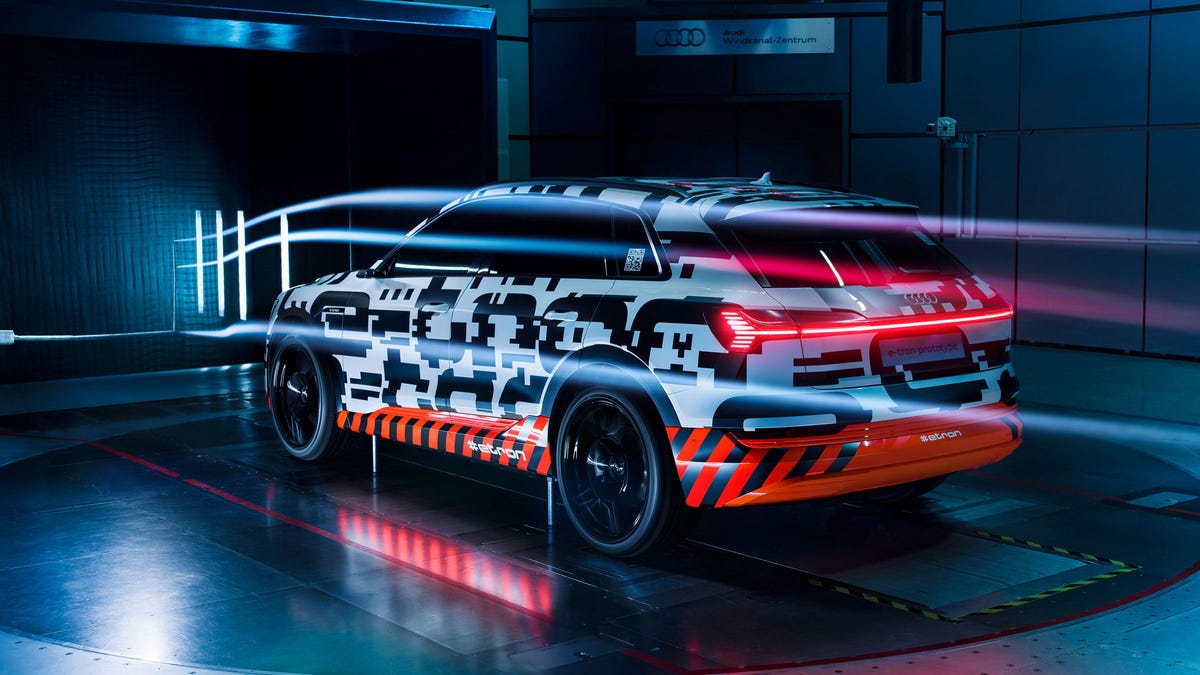Audi E-Tron gets golf-ball-like dimpling, virtual side mirrors
The E-Tron will have a drag coefficient of just 0.28, a very impressive figure for an SUV.

Cutting aerodynamic drag is key to maximizing the driving range of electric cars, so it's no surprise that Audi's engineers worked hard to make the forthcoming E-Tron as slippery as possible, with a drag coefficient of just 0.28. One of the secrets to cutting drag? Cameras that replace traditional mirrors, which will be a production car first when Audi puts them into production.
The tiny cameras seen on the Audi E-Tron prototype make the entire vehicle 5.9 inches narrower to begin with, but also reduce both drag and wind noise for occupants. Their output is shown on OLED display panels mounted at the intersection of the doors and dashboard, and can also be shown on the MMI infotainment display for parking or maneuvering. Although many concept cars have used camera mirrors like this, we haven't yet seen it on a production car. Nonetheless, Audi promises the feature as a "high-end option" for the E-Tron. An Audi of America spokesman confirmed that camera-based mirrors are not currently allowed under US law, but said that, "we are working with the authorities to see how we can make them available."
These cameras aren't legal in the US – yet.
Other steps to increase the E-Tron's aero prowess included fully sealing the car's underside with aluminum panels. Usually, though, the bolts used to mount those panels would stick up and disrupt airflow, but not on the E-Tron. Audi engineers designed those points like the dimples on a golf ball – and just like your favorite Callaways, the dimples help smooth out airflow over the flat underbody covers.
Two electric louvers behind the Singleframe grille close when no airflow is needed, any only open when necessary for the climate control or battery conditioning – or to channel cooling air to the front brakes. Air suspension also lowers the E-Tron by one inch when it's driving faster than 75 miles per hour, which further cuts drag. The 19-inch wheels have also been designed with aero performance in mind, and the lettering on the Audi's tires is even intended rather than embossed so as not to disrupt airflow.
All told, Audi says that over 1,000 hours of engineering work in a wind tunnel helped the company cut the E-Tron's drag coefficient by seven points to 0.28. That, in turn, is said to provide about 21.7 extra miles of driving range per charge in everyday use. The Audi E-Tron is targeting an all-electric range of 400 kilometers, or 248.5 miles, in European testing. For comparison to another all-electric SUV, the Tesla Model X has a claimed drag coefficient of just 0.25.
The production Audi E-Tron is expected to be revealed later this year and will go on sale in 2019. It will feature a 95-kWh battery pack and three electric motors that deliver a combined 429 horsepower. In keeping with the car's zero-emissions goal, it will be produced at a carbon-neutral plant in Brussels.

